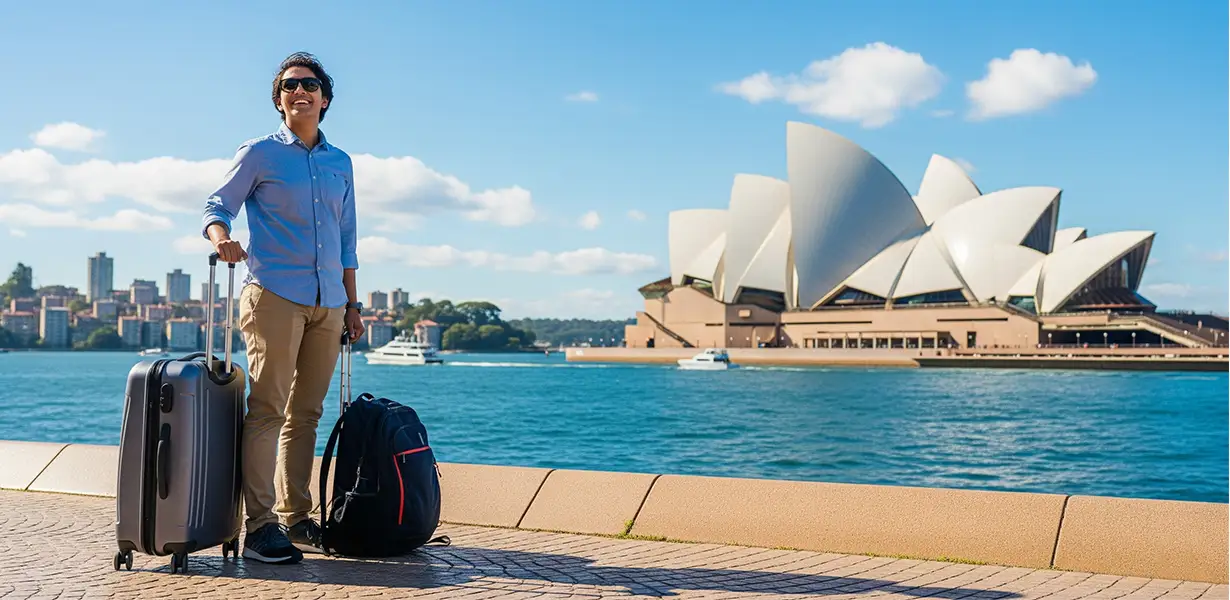How to immigrate to Australia?
Australia, renowned for its high quality of life, dynamic economy, advanced education system, and diverse job opportunities, remains one of the most popular immigration destinations globally. It is especially attractive due to its vibrant multicultural society and high living standards.
There are various ways to immigrate to Australia, including work, skilled, student, and family visas. The most common methods for obtaining residency include skilled migration (subclasses 189, 190, and 491) and student visas.
This guide provides a comprehensive overview of the most up-to-date immigration methods and conditions for Australia in 2025, as outlined by the Australian Department of Immigration. Additionally, you can complete the immigration evaluation form below, and our consultants will contact you to assess your situation and provide personalized guidance.
To receive professional immigration consultation, please fill out the form below:
Immigration Conditions for Australia
The immigration conditions for Australia are divided into general and specific conditions. Specific conditions depend on the migration method and visa type, which will be explored in detail.
The most important general conditions for immigrate to Australia include:
- Good health status
- Completion of a medical test
- No criminal record
- Language proficiency (for work and study visas)
- Complete documentation
- Payment of government visa fees
Immigration Methods to Australia in 2025
- Skilled and Work Visa: One of the most popular pathways for obtaining residency is through work visas for individuals with skills listed on Australia’s occupation needs list.
- Investment Visa: Suitable for entrepreneurs and investors. Currently, immigration through this method is not available, as it will be closing in mid-2024.
- Study Visa: Individuals with the financial means to support their education and living costs may opt for student immigration.
- Family and Marriage Visa: Family visas allow Australian residents or citizens to sponsor their family members for temporary or permanent residency.
- Tourist Visa: This is not an immigration method. The tourist visa provides short-term residency for purposes such as family visits or business meetings.
- Refugee Visa: Seeking asylum is one of the most challenging and risky immigration methods, and it is generally not recommended due to its complex nature.
Immigration through Work and Skilled Visas to Australia
One of the most popular ways to obtain Australian residency is through skilled work immigration. Due to the shortage of skilled labor in certain sectors, Australia addresses part of its workforce needs through immigrants. The Australian government issues various visas, each with its own conditions.
Important: The most common skilled worker visas are subclasses 189, 190, and 491.
Immigration through Investment Visas
The Australian investment visa is designed for business owners, investors, and entrepreneurs who have sufficient capital to start a business. The subclass 188 visa is the most practical option for investors. However, it’s important to note that this visa will be closed for new applications starting in July 2024.
Immigrants who have been running their business for at least two years under the subclass 188 visa can apply for permanent residency through the subclass 888 visa.
Immigrate to Australia through Study
If you wish to study in Australia and can afford the necessary living and educational expenses, student immigration is a great option.
To study in Australia, you must first gain acceptance from a recognized Australian institution or university and then apply for a subclass 500 student visa. You must also have a minimum IELTS score of 6 and show financial capability (at least 29,710 AUD annually for a single person). The student visa is valid for up to 5 years and can be extended based on further eligibility.
Upon graduation, you can apply for the Temporary Graduate Visa subclass 485, which allows you to stay in Australia for an additional 2 to 4 years.
Immigrate to Australia through Family and Marriage
Australian residents or citizens can sponsor their family members for temporary or permanent residency. There are 23 types of family visas, including those for parents, children, and spouses, each with specific conditions.
Immigrate through Tourist Visas
The tourist visa is issued for short stays such as tourism, family visits, business meetings, or trade events. However, it does not provide a pathway for long-term immigration.
There are several streams for tourist visas, including Sponsored Family Stream, Tourist Stream, and Business Visitor Stream, each with its own conditions.
Important Note: While some individuals may try to enter Australia on a tourist visa and later apply for asylum, this is a highly risky and not recommended method.
Immigrate to Australia through Asylum
Seeking asylum is a difficult and risky method for immigration. Australia has strict regulations for refugee admission. Asylum should not be considered a primary immigration method due to its complexities and challenges.
Australia issues several types of refugee and humanitarian visas, including:
- Refugee category visas (subclasses 200, 201, 203, 204)
- Global Special Humanitarian Visa (subclass 202)
- Temporary Protection Visa (subclass 785)
- Safe Haven Enterprise Visa (subclass 790)
- Protection Visa (subclass 866)
Necessary Documents for Immigrate to Australia
The required documents vary depending on the immigration method but generally include:
- Valid passport (minimum 6 months)
- Personal identification documents (birth certificate, national ID, etc.)
- Bank statements and financial proof
- Employment and educational documents
- Invitation letters, job offers, or sponsorships (if applicable)
- Proof of English language proficiency (IELTS, TOEFL, PTE, OET)
- Payment receipts for government immigration fees
- Completed visa application forms
- Police clearance certificate
Language Requirements for Immigrate to Australia
For most visas, especially work and student visas, proof of English language proficiency is required. Approved tests include IELTS, TOEFL, PTE, CAE, and OET.
General Immigrate Process to Australia
The process may differ depending on the visa type, but the general steps are:
- Review personal conditions and select the appropriate visa.
- Gather and translate necessary documents based on the selected visa.
- Submit the visa application online via the Australian Department of Immigration’s website (ImmiAccount).
- Complete the required forms, upload documents, and pay government fees.
- Wait for the application to be processed and, if needed, visit VFS for fingerprinting (for some visas).
- Prepare for travel once the visa is approved.
Processing Time for Immigrate to Australia
Processing times vary based on the visa type. Skilled visa applications usually take between 7 to 11 months.
Immigration Costs to Australia
The costs associated with immigrate to Australia depend on the visa type and stages of immigration. These costs include government fees, translation, fingerprinting, legal fees, etc. The Australian immigration website provides an online calculator to estimate visa fees based on your situation.
Cost of Living in Australia
The cost of living in Australia depends on the city, family size, and lifestyle. As of July 2025, the estimated monthly costs (excluding rent) are:
- For a family of 4: 5,696.4 AUD
- For a single person: 1,607 AUD
Do You Need an Immigration Lawyer for Australia?
Due to the complexities and strict regulations of the Australian immigration system, consulting with an immigration lawyer can help speed up the process and increase the chances of visa approval.
Permanent Residency in Australia
Most immigration methods lead to permanent residency. Some visas, like 189, 190, and 186, offer permanent residency from the outset, while others are temporary and can be converted to permanent residency after meeting specific requirements.
Australian Citizenship
The highest status an immigrant can achieve is Australian citizenship, which includes many benefits such as obtaining an Australian passport and access to free education. To apply for citizenship, you must:
- Be over 18 years old
- Hold permanent residency
- Have lived in Australia for at least 4 years with a valid visa
- Pass the citizenship test
Conclusion
This guide has discussed the conditions and methods for immigrating to Australia. Work and student immigration are among the most popular methods. For further inquiries or clarifications, feel free to ask in the comments section.
- Australia
Skilled Worker
- Amount: $7,000 (Normal Price)
- Process Time: Approximately 24 months
- Payment Terms: 50% upon contract signing, 21.5% Announcement of document assessment result, 14.3% Lodgment of the case, 7.1% Receive of invitation letter, 7.1% Receive of medical letter
Related Service
- Australia
Permanent Residency
- Amount: $25,000 (Normal Price)
- Process Time: Approximately 24 months
- Payment Terms: 25% upon contract signing (5,000), 25% after positive assessment(5,000), 25% after EOI completion(5,000), and 25% after receiving invitation(5,000)
- Australia
Educational Services
- Amount: $400 (Normal Price)
- Process Time: Approximately 3 months
- Payment Terms: 100% upon contract signing
- Australia
Sponsorship
- Amount: $10,000 (Normal Price)
- Process Time: Approximately 24 months
- Payment Terms: 50% upon contract signing (5,000), 50% after visa submission (5,000)



